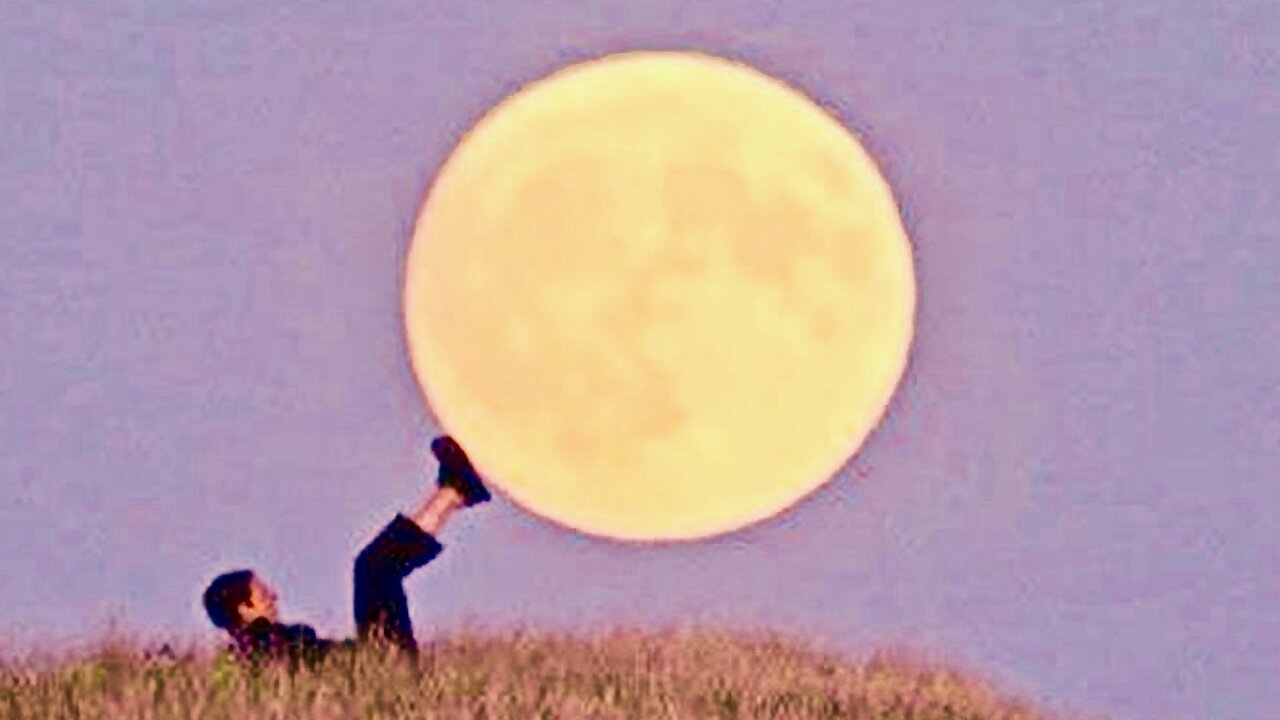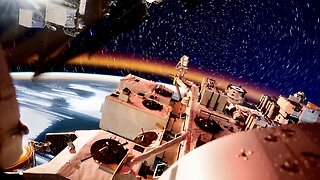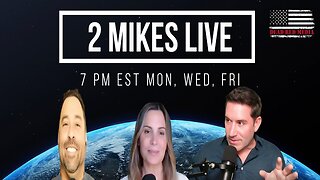Premium Only Content

How Our Moon Becomes A "Supermoon" - 14% Bigger and 30% Brighter
A Supermoon happens when a Full Moon or New Moon coincides with the Moon's closest approach to Earth; also called perigee. A Supermoon can be a Full or New Moon. A Super Full Moon looks around 12% to 14% bigger than its counterpart, the Micromoon. How can Full Moon be in the daytime?
Perigee and Apogee
The Moon's orbit around Earth is not a perfect circle, but elliptical, with one side closer to Earth than the other.
As a result of the Moon's elliptical orbit, the distance between the Moon and Earth varies throughout the month and the year. On average the distance is about 382,900 kilometers (238,000 miles).
The point on the Moon's orbit closest to Earth is called the perigee and the point farthest away is the apogee.
When a Full Moon coincides with its closest approach to Earth, it is called a Super Full Moon. A New Moon that takes place when the Moon is around its perigee is known as a Super New Moon.
A Micromoon, on the other hand, is when a Full or a New Moon is farthest from the Earth, around apogee. It's also known as a Minimoon, Mini Full Moon, or a Mini New Moon.
Astronomical terms & definitions
Not an Official Name
Supermoon is not an official astronomical term. It was first coined by an astrologer, Richard Nolle, in 1979. He defined it as ‘a New or a Full Moon that occurs when the Moon is at or near (within 90% of) its closest approach to Earth in its orbit’. It is not clear why he chose the 90% cut off in his definition.
There are no official rules as to how close or far the Moon must be to qualify as a Supermoon or a Micro Moon. Different outlets use different definitions. Due to this, a Full Moon classified as a Supermoon by one source may not qualify as a Super Full Moon by another.
Supermoon: A Full or New Moon that occurs when the center of the Moon is less than 360,000 kilometers (ca. 223,694 miles) from the center of Earth.
Micromoon: A Full Moon or New Moon that takes place when the center of the Moon is farther than 405,000 kilometers (ca. 251,655 miles) from the center of Earth.
Technical Name: Perigee-syzygy
The technical term for a Supermoon is perigee-syzygy of the Earth-Moon-Sun system. In astronomy, the term syzygy refers to the straight-line configuration of three celestial bodies.
When the Moon is close to the lunar nodes of its path during syzygy, it causes a total solar eclipse or a total lunar eclipse.
Because it's so close to Earth, a Super Full Moon looks about 7% bigger than an average Full Moon. When compared to a Micromoon, it looks about 12% to 14% larger.
A Super Full Moon also looks about 30% brighter than a Micro Full Moon and about 16% brighter than an average Full Moon.
Biggest During Winter
Supermoons during Northern Hemisphere winter months tend to look larger than Supermoons that occur during the rest of the year. At this time of the year, Earth is closer to the Sun. Because of this, the Sun's gravity pulls the Moon closer to Earth, making any winter Super Full Moons look bigger than summer Super Full Moons.
Best at Moonrise
The best time to enjoy a Super Full Moon is after moonrise when the Moon is just above the horizon, weather permitting. At this position, a Super Full Moon will look bigger and brighter than when it's higher up in the sky because you can compare the apparent size of the Moon with elements in the landscape like hills, foliage, and buildings. This effect is called the Moon Illusion.
The greatest difference between high and low tide is around Full Moon and New Moon. During these Moon phases, the gravitational forces of the Moon and the Sun combine to pull the ocean’s water in the same direction. These tides are known as spring tides or king tides.
Supermoons lead to around 5 cm (2 inches) larger variation than regular spring tides, called perigean spring tides.
The tidal range is smallest during the 2 Quarter Moons, known as neaps or neap tide.
Natural Disaster Trigger?
Although the Sun and the Moon’s alignment cause a small increase in tectonic activity, the effects of the Supermoon on Earth are minor. Many scientists have conducted studies, and they haven’t found anything significant that can link the Super Moon to natural disasters.
According to NASA, the combination of the Moon being at its closest and at Full Moon, should not affect the internal energy balance of the Earth since there are lunar tides every day.
Music: Kaddish (Angelic Instrumental) by Dhruva Aliman
Amazon- https://amzn.to/3dgKA52
https://music.apple.com/us/artist/dhruva-aliman/363563637
https://dhruvaaliman.bandcamp.com/album/hard-to-get-along
http://www.dhruvaaliman.com/
Spotify - https://open.spotify.com/artist/5XiFCr9iBKE6Cupltgnlet
#celestial
#lunar
#beautiful
-
 3:12
3:12
Seeker Land
1 month agoInteresting Experiments On ISS - International Space Station
1141 -
 LIVE
LIVE
Sarah Westall
1 hour agoTDS Worldwide, Trump Playing Economic Chicken, Global Power Shifts w/ Andy Schectman
212 watching -
 LIVE
LIVE
Solar Dolphin
1 hour agoDolphin Plays: Heroes Hour
39 watching -
 54:03
54:03
BonginoReport
4 hours agoGender Bender Tesla Terrorist RELEASED (Ep. 40) - Nightly Scroll with Hayley 05/02/2025
59.8K41 -
 1:17:17
1:17:17
Kim Iversen
4 hours agoChina BLAMES USA For Covid Leak | Are Ports Really EMPTY Since Trump's Tariffs?
60.4K86 -
 LIVE
LIVE
The White House
4 hours agoLo-Fi MAGA Video to Relax/Study To 🇺🇸
899 watching -
 LIVE
LIVE
2 MIKES LIVE
3 hours ago2 MIKES LIVE #212 Open Mike Friday!
103 watching -
 LIVE
LIVE
Mally_Mouse
3 hours agoLet's Play!!
91 watching -
 53:09
53:09
LFA TV
9 hours agoD.C. Is Addicted to Debt | TRUMPET DAILY 5.2.25 7PM
3.91K1 -
 1:23:06
1:23:06
vivafrei
5 hours agoAdam Kinzinger Says Quiet Part Out Loud! Mineral Deal with Ukraine? Cash for Racism & MORE!
71K71